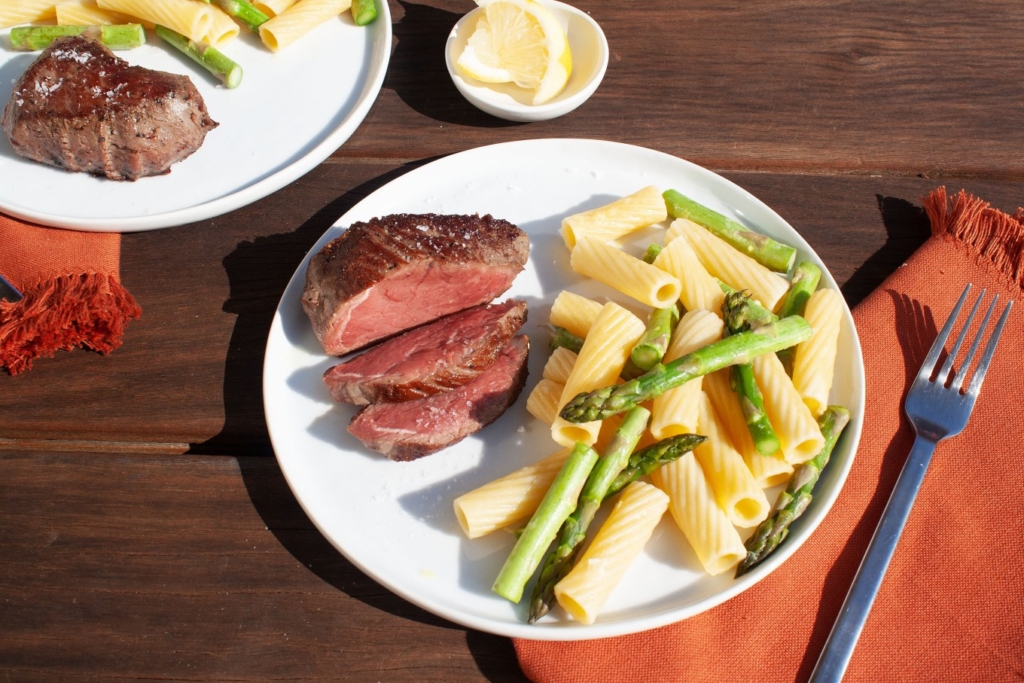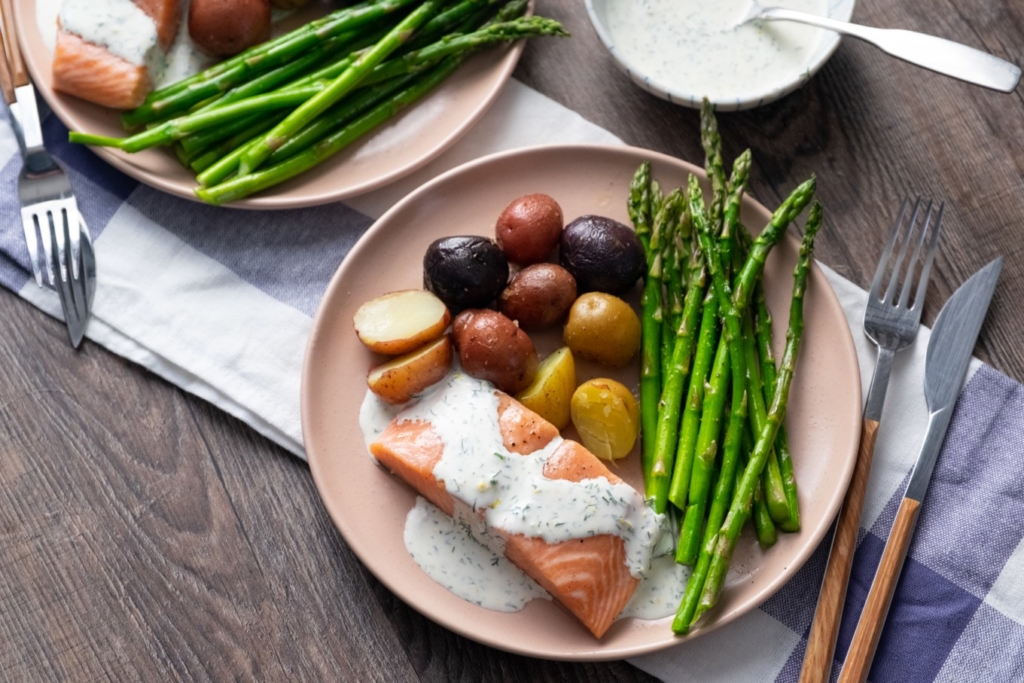Roasted or broiled asparagus has its merits, but one of the absolute best ways to cook this green veggie is sous vide. The steady and precise sous-vide cooking process results in perfectly tender and crisp asparagus that retains all of its glorious color and flavors.
Follow this simple guide to prepare perfectly cooked asparagus every time.
Temperature and cooking times for asparagus
| Device | Temperature | Time |
| Suvie | 165°F | 15 Minutes |
| Immersion Circulator | 185°F | 10 Minutes |
Asparagus is best cooked at a very high temperature for a short period of time. Cooking the green stalky vegetables for 10-15 minutes should be more than enough.
Ingredients and Tools
- 1 bunch asparagus with the ends removed
- Olive oil
- Salt
Equipment
- Suvie or immersion circulator
- A large pot (if using an immersion circulator)
- Vacuum sealer and bags or freezer safe recloseable bags
Directions

If you’re using a sous vide immersion circulator, pre-heat your water bath to the desired temperature.
Wash the asparagus and cut away and discard the ends.

Place the asparagus into a plastic bag. Add a small amount of oil and vacuum seal the bag, If you’re using a recloseable bag, follow our guide on the water displacement method.

Lower the bag into the water bath and cook for 10 minutes.
If you are using Suvie, place the bag into a Suvie pan and cover completely with water. Place in the top right zone of Suvie and use the following settings:
Suvie Cook Settings
Bottom Zone: Sous Vide at 165°F for 15 minutes
Top Zone: Sous Vide at 165° for 15 minutes
Once the cook is done remove the bag from your Suvie or water bath.

Remove the asparagus from from the bag and season with salt and pepper. Serve immediately.
Recipes to try
Sausage with Asparagus and Pasta

Seared Steaks with Rigatoni and Asparagus

Za’atar Chicken with Asparagus

Salmon with Dill Sauce

FAQs
Are the cooking temperatures safe?
Our recommended cooking temperatures for Sous vide and Suvie are lower than what the USDA recommends, however, cooking times and temperatures are long enough and high enough for “pasteurization” to make your food safe. The USDA recommendations indicate the temperature needed to instantly kill food pathogens. By cooking for a longer time at a lower temperature we are able to achieve the same effect. However, high-risk populations should use extra caution when preparing foods below the USDA recommended temperatures.
Can I use any type of plastic bag?
You can, however, make sure that they are made from polyethylene. Brand name recloseable bags are made using polyethylene which is a BPA and dioxin free plastic that can safely handle sous vide cooking temperatures up to 190°F. Some generic branded plastic bags are made using cheaper polyvinyl chloride (PVC) which cannot handle high temps and contains chemicals that can leach into food.
The bag with the asparagus won’t stay under water, what do I do?
This is often a problem with certain proteins and vegetables. There are a few ways to prevent the bag from floating at the top of the water bath. A layer of ping pong balls in the immersion bath will keep the food underwater, alternatively, you can try and weigh down the bag with a metal spoon.
Can I leave my food in the water bath indefinitely?
You can, but you shouldn’t. Leaving asparagus in sous vide for long periods of time will have a negative effect on the overall texture of the vegetables.
Can I cook other vegetables in the same bag as the asparagus?
You can! Fortunately, most vegetables can be cooked at around the same temperature so feel free to add other similar veggies. However, avoid mixing the asparagus with startchy vegetables like carrots and potatoes with require much longer cooking times.




I have a Suvie 2.0 Robot, do I have to use a bag cooking the asparagus?
Hi Vicki, Thanks for reaching out! Yes, You’d need either a Vacuum sealer bag or freezer-safe resealable bag for cooking asparagus using the sous vide method in Suvie 2.0. The sous vide method of cooking implies that food should be sealed in a plastic bag with all the air removed and then cooking that food in temperature-controlled water. I hope this helps!